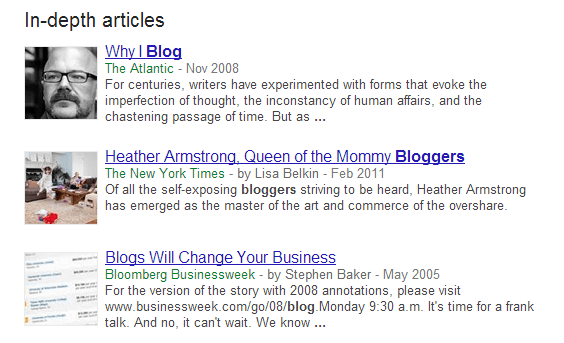What is Evergreen Content and Why Should I Care?

In nature – you know, the world outside, where you’re not in an office chair behind a desk – there are trees. There are, broadly, two types of trees. There are deciduous trees, the ones that turn colors in the fall and lose all their leaves in winter. They make for pretty dioramas and scenes to set the stage in film. Then you have the evergreens, trees like the pine and spruce, your stereotypical Christmas tree. These maintain their leaves throughout the year, even in winter, looking roughly the same throughout.
Content on the web follows a similar dichotomy. You have your deciduous or timely content, the stuff you write about product releases and new trends, current events and deals. This content is bright and alive for a short time, from days to months. Then you have your evergreen content, content that’s alive and active day in and day out, for months or years.
Types of Evergreen Content
Evergreen content comes in many shapes and forms. For example, you might not think about it, but your contact page is evergreen content. The information doesn’t change, or if it does, you update the page. Someone can bookmark the page and come back to it a year from now, knowing it will be just as useful for its purpose.
Here are some other examples of evergreen content.
- Glossaries and definition documents. It isn’t as though the definition of “SEO” or “Evergreen” is going to change in the next few months, so writing a post about it has long-term potential.
- Reference documents. Someone ten years from now might want to know the intricacies of the software behind the iPhone 4, so a user manual is valid evergreen content.
- Beginner’s guides to subjects that don’t change much. If I were to write a beginner’s guide to SEO, most of the information would remain valid for years. The information that changes, well, I can keep it up to date.
- Top ten lists of non-time-sensitive materials. Any top ten list, as long as it’s not a “top ten things you care about today but won’t tomorrow” list, is going to have long-term potential.
- Annual retrospectives. A historical perspective is perfectly valid to look back on in the future.
- Statistical tracking posts. Sort of like historical retrospectives, a stats tracking article can be useful to see past data and how data changes over time.
- Interviews. Everyone likes a good interview, and the opinions of an influencer aren’t likely to change much. The quality of the evergreen content does depend on the subject of the interview, however.
- Testimonials and reviews. Someone saying something nice about your company is valid for as long as you can keep it around. Unless your company has a drastic shift and the customer expressly tells you to remove the testimonial, it’s evergreen.
Contrast this with some examples of content that’s not evergreen, and you see what I mean.
- Product launch hype. Once the product is launched, the hype-building articles become worthless.
- Contests and giveaways. Who cares about a contest article once the contest is over?
- Coupon roundups. Coupons expire. Expired coupons do you no good.
- Rumors and predictions of the future. While some future predictions can be amusing to look back on, they don’t have long-term value.
As you can see, the key to evergreen content is either a very long or indefinite expiration date. If your content doesn’t expire and become valueless, it’s evergreen.
Keeping the Plant Alive
Here’s something many people forget about evergreens: “Leaf persistence in evergreen plans varies from a few months (with new leaves constantly being grown as old ones are shed) to several decades.”
Apply this concept to content. If you consider leaves to be individual bits of information, then a piece of content you write and abandon is a dead plant. To keep your plant alive, to keep your evergreen content valuable, you need to keep pruning out the old dead content and replacing it with new, living content.
In general, this means that you need to work to keep your evergreen content alive. If you write a post about link building for SEO, including every possible method you can think of for link building, black and white hat, it’s a great evergreen resource. Then Google changes something, like they did with guest posting. Now your evergreen content is losing some leaves. To keep your content alive and valuable, you need to step in and change some information, move guest posting for links into the gray hat section, or however you choose to do it.
An Alternative Focus
One interesting take I’ve been seeing is the idea of creating your evergreen content geared for beginners. Think about it; when you create a resource, such as a how-to guide, you could target it at someone experienced with the industry or someone new to the whole thing.
Someone with experience might look at what you had to say, scoff, proclaim how much more they already know, and leave. Meanwhile a beginner will find it to be a valuable resource, will bookmark it, will reference it constantly, and will share it with their beginner friends.
The biggest restriction this focus places on your content is the range of topics. However, focusing evergreen content on beginners doesn’t restrict you from writing for advanced users; it just means you need to be aware of your audience.
One idea, and one I see on blogs like some Moz posts and on the Google Webmaster blog, is to flag each post with the level of the audience you’re targeting. Writing a beginner’s guide? Flag it with “User Skill: Beginner.” Writing something for more advanced users? “User Skill: Advanced.” Writing a more general interest piece, or something that applies to everyone? User Skill: All.
Regardless of who you target and how you do it, evergreen content is great. It keeps users coming back, it builds links, and it positions you as a great, high-profile resource in your industry. What more could you ask for?
 ContentPowered.com
ContentPowered.com







James – what percent of my content should be evergreen vs normal articles?
Hi Cliff, thanks for your comment! I’d keep it varied. Fresh content is beneficial (newsy content) as well as content that will stand the test of time. Evergreen topics are generally more competitive and could take longer to yield traffic than relatively new topics (which could yield traffic sooner). A balanced approach is best!
Thanks for explaining, James. I can see the appeal behind evergreen content, it makes much more sense from an investing standpoint